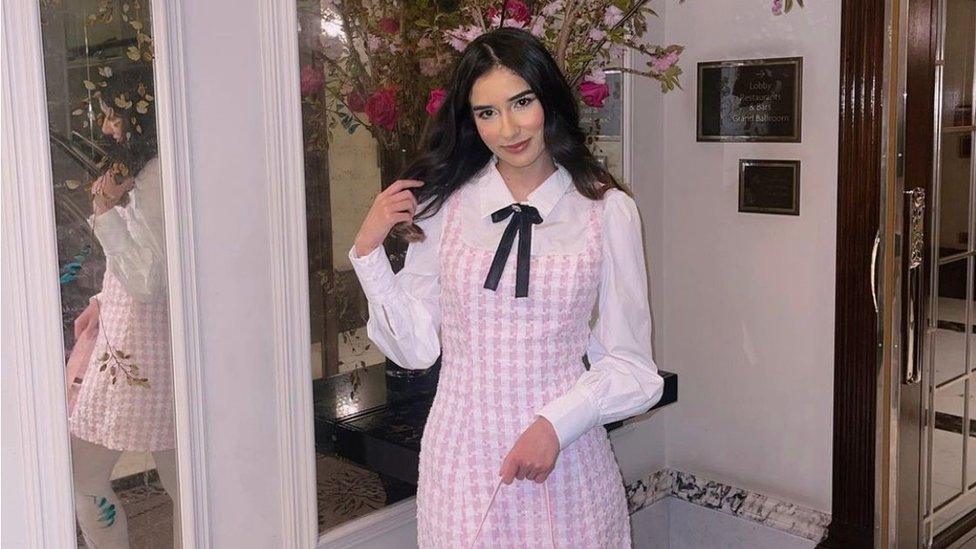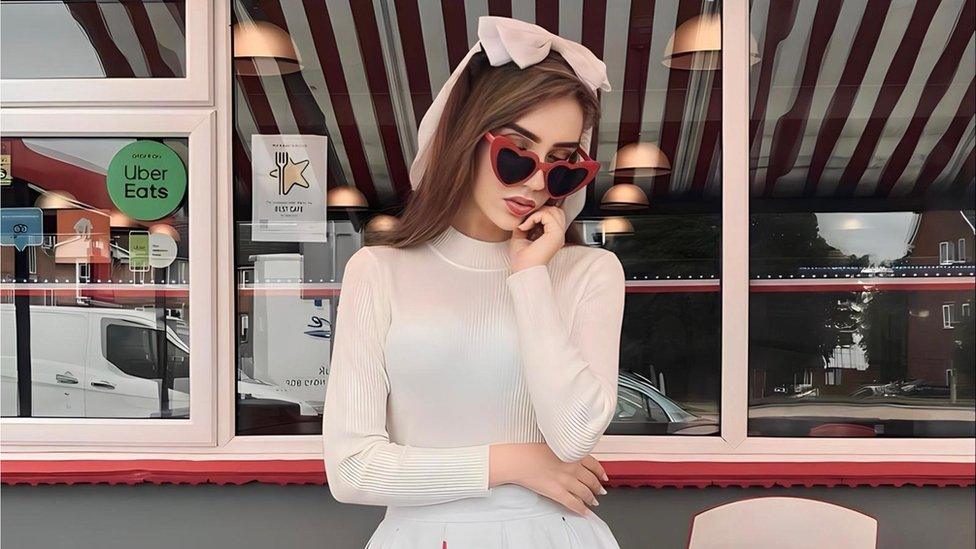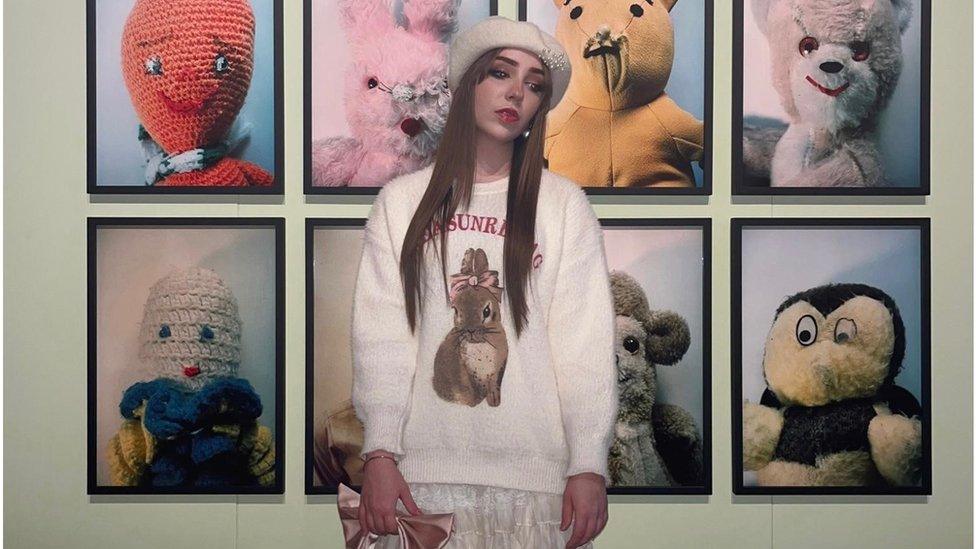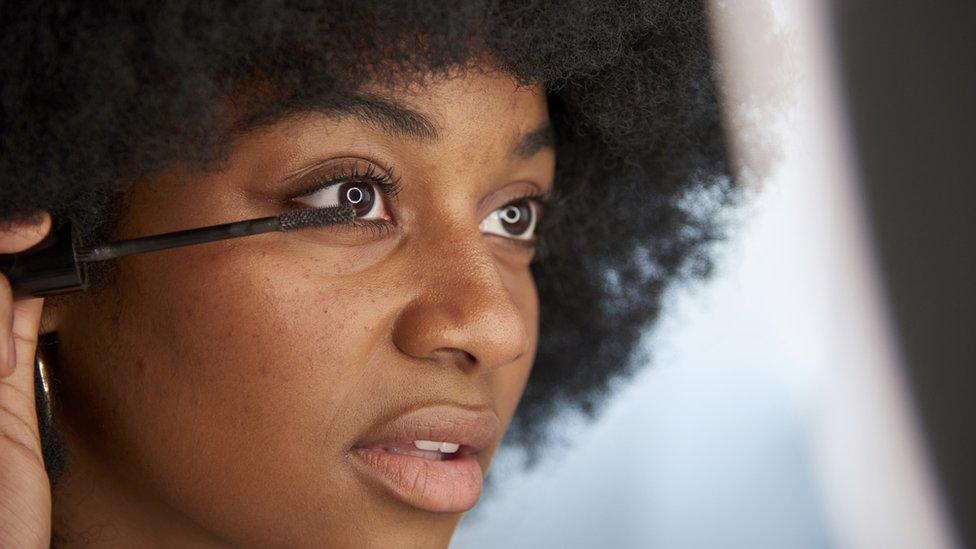Coquette: Why the TikTok trend is more than just cute bows
- Published

Amira credits the recent explosion of coquette aesthetic to cultural moments like the TV series Bridgerton
When you think of the word "bow", what comes to mind? Perhaps someone tying their hair up or decorating a gift.
But if you've scrolled through TikTok, you might have seen ribbons being tied on random things such as biceps, packets of fries and credit cards.
Most with a Lana Del Rey song playing too.
The #coquette trend has racked up nearly 18 billion views and 1.2 million creations.
While most of the videos feature people putting bows on different objects, the trend is part of a style that has been around for much longer.
The fashion aesthetic includes pastel colours and lots of clothes with materials like lace and chiffon.
'Anyone can enjoy it'
The Oxford Dictionary defines the word coquette as "a woman who flirts".
More recently though, this has been shaped by some to feel more meaningful.
Amira Mohamed says she feels "really empowered" wearing coquette clothing, after "not being taken seriously" for being girly while growing up.
"It's a style of dressing for ourselves," she says, adding it's a chance to "reclaim" herself.
The 22-year-old from north London also sees coquette as "the feminine side of dressing".
She started wearing pastel pinks during the Covid pandemic and saw it as a way to reflect on her own childhood.
"I think at the heart of the aesthetic is nostalgia, looking back at what made us happy," she says.

Kellen's coquette style was influenced by musical artists like Lana Del Rey and Melanie Martinez
Kellen Beckett was first introduced to coquette themes on Tumblr about three years ago.
Like Amira, she feels it's a chance to "embrace being feminine".
"I remember being in school and it was not seen as cool to be girly. Not liking pink was kind of a cool thing."
With the current trend, 19-year-old Kellen feels things have "been flipped on its head".
"People have got access [online] and now it's OK to like these things."
Kellen posts videos that show her own take on this style of dress, which combines "whimsical and classic" pieces together.
"There's a lovely mixture of things that are the very essence of girlhood."

Although the bow was a small part of coquette, it has come to sum up the entire aesthetic
According to fashion historian Dr Serena Dyer, there is a longer history behind the aesthetic, with inspiration from historical periods spanning 200 years.
"A lot in the corsets seen in the 18th century, fabrics of the Regency era and lace from the Victorian period," she tells Newsbeat.
And women using fashion as a source of self-empowerement is not unusual, according to Dr Dyer, who is a professor at De Montfort University.
"It's partly about women's agency over their bodies, they are presenting what they want and how they want to be presented."
"And while that might be a sexual gaze, there's no sense that's necessarily a heterosexual gaze."

Some of the imagery associated with the coquette aesthetic includes cute baby animals
Both Kellen and Amira feel it's important the trend is centred around women, but alternative fashion TikToker Addy Somers doesn't think it's that simple.
While she agrees with the idea of coquette "taking a new spin on what the male gaze is", Addy thinks that problems arise with it in reality.
She feels the coquette aesthetic could also be considered an issue for promoting a singular body type of thin, white women.
"It's that weird counterbalance between reclaiming something that should be accessible to everyone.
"And yet you have these predetermined set of rules that exclude a vast majority of people.
"It becomes inherently problematic, because you start setting a standard that many women simply cannot attain," Addy, 25, says.
But Kellen feels the trend can be fun for everyone.
"It's a style, not a rule or religion. Anyone should be able to partake in it and enjoy it."
Amira thinks the online community today is "starting to change".
As an Indian woman embracing coquette, she's found it "amazing" to see South Asians creating content on it.
"I've seen more diversity in the community than in some mainstream fashion spaces," she says.


- Published24 January 2024

- Published6 December 2023

- Published2 February 2023
